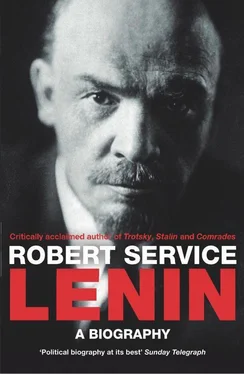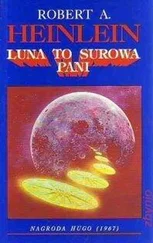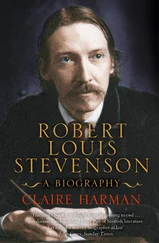There also remains uncertainty about the identity of his Astrakhan grandmother. Even her first name is problematical. According to some sources, she was Alexandra, whereas others have her as Anna. It cannot wholly be discounted that she was a Russian by birth. But certainly Lenin’s sister Maria was convinced that their Astrakhan forebears had a Tatar ingredient in their genealogy; and Maria may have had her grandmother in mind when she referred to this. Most writers have her as a Kalmyk but it is conceivable that she was a Kirgiz. The Kalmyks were a mainly Buddhist people living in the southernmost regions of the Russian Empire. Their ancestors were the nomadic tribes which had overrun the Russians in the thirteenth century with the Mongol Horde. Most of the Kalmyks and Kirgiz who lived in Astrakhan were poor; some were even slaves. Only a few rose to become urban traders. They were disliked and despised by the Russian authorities as ‘Asiatics’.
Nevertheless the possibility that she was a Russian is not wholly discountable since the records are so scanty and imprecise. Mysteries continue to exist. But later generations of the family believed that a non-Russian element (‘Tatar’, as Anna Ilinichna Ulyanova put it) entered their ancestry in Astrakhan and it is difficult to believe that they invented this. 24Alexandra was younger than Nikolai Ulyanov, who had delayed marrying until middle age. Indeed he reportedly bought his wife out from a prominent Astrakhan merchant family. This has encouraged the speculation that she had been converted to Orthodox Christianity. But in truth a cloud of unknowing covers the matter. Another piece of guesswork is even more peculiar. This is that Nikolai Ulyanov already shared a surname with his bride Alexandra. The suspicion has been aired that Nikolai and Alexandra were related by blood, even quite closely related. Nothing has been proven and, in the absence of documents, probably never will be. The only fair conclusion is that Lenin could not claim a wholly Russian ancestry on his father’s side; indeed it is possible, but by no means certain, that he lacked Russian ‘blood’ on both sides of his family.
Yet Nikolai and Alexandra, whatever their origins, brought up their family in Russian culture, raised them in the Orthodox Christian faith and sent the boys to Russian schools. 25The Ulyanov family was taking its opportunities to establish itself in the lower middle class of Astrakhan society. Its ambition survived the death of Nikolai at the age of seventy-five in 1838. The eldest son Vasili, who never married, took his family responsibilities seriously and paid for his brother Ilya – thirteen years his junior – to enter the Astrakhan Gimnazia and to proceed to the Imperial Kazan University, where he completed a mathematics degree in 1854. On graduation Ilya took a succession of teaching jobs. His first post took him to Penza, where he worked in the Gentry Institute. It was there that he met Maria Alexandrovna Blank, who was staying with her sister Anna, the wife of the Gentry Institute’s director I. D. Veretennikov. 26
The marriage of Ilya Nikolaevich Ulyanov and Maria Alexandrovna Blank took place in Penza in August 1863. They shared many interests and a general attitude to life. In particular, they had a common passion for education. This brought them together despite the many contrasts in their backgrounds. Ilya adhered to Orthodox Christianity whereas Maria was a tepid Lutheran. Ilya had an Asian background, Maria a north European. Ilya was a man of the Volga. He lived his whole life near that great river: in Astrakhan, Kazan, Penza, Nizhni Novgorod and finally Simbirsk. Maria had lived her early years in St Petersburg and the western area of the Russian Empire. Whereas the Ulyanovs had only recently become comfortable in material terms, the Blanks had always been so. Ilya was a university graduate; Maria had been educated only at home. None of these differences mattered to them. What counted was their educational commitment. Maria was as zealous about this as Ilya; she too trained as a teacher even though she did not proceed to teach in a school. Education was the focal point of their lives. The Blanks had been brought up this way. Not only Maria but also two of her sisters married teachers who rose up the hierarchy of educational administration. Ilya and Maria were united by their zeal, which they successfully transmitted to the next generation.
Ilya had intellectual pursuits outside schooling. He was fascinated by meteorology, and he published learned articles based on his scientific observations. His training at the Imperial Kazan University had sharpened his intellectual appetite. Wind, rain, sun and humidity were recorded by him. Ilya Ulyanov was devoted, as his children would also be, to the rational investigation of their environment. For Ilya the object of attention was the weather; for his offspring it would be the politics of the Russian Empire.
Although Ilya was academically gifted, Maria outshone him in at least one respect. When speaking German, he had trouble with his r s as if he were speaking French. (In fact he had the same problem with the Russian language.) The results could be comic to the ears of his school pupils. On one occasion, for instance, he asked some of them what the German word was for ‘very’. A pupil answered ‘sekhr’, with the heavy aspirate of the Russian language, instead of sehr . But when Ilya tried to put him right, his own attempt was no better: ‘sehl’. Ilya pretended not to notice the class laughing at his mispronunciation. 27Yet simultaneously he let everyone know that he was always looking for high standards. His standards were applied not only to pupils but also to teachers. He never failed to reprimand any of his protégés who did not come up to scratch. But the successful ones held him in admiring respect and were proud to be called the Ulyanovites ( ulyanovtsy ). Ilya’s accomplishments provided him and his family with prominence and status in Simbirsk. He had done well for the province.
His success was made possible by his wife’s efficiency in running the Ulyanov household. Ilya even left it to her to buy his suits. 28Although he was a tailor’s son, Ilya could not be bothered to try on clothes. His preoccupation was with his work, and everything was subordinate to it. At home Maria enjoyed his total confidence and Ilya received her unstinting support. They lived a rather isolated existence. Ilya liked the occasional game of chess and whist. But he could find only the elderly civil servant and accountant Arseni Belokrysenko – his son Vladimir’s godfather – as his chess partner; 29and he played whist only with the town’s teachers. 30Maria Alexandrovna was even more withdrawn from local society. A few friends came to the family house on Streletskaya Street, but she seldom paid them any visits in return. Ilya and Maria travelled around the Volga region in the summer. Yet their trips were always to members of one side or the other of their family. In Ilya’s case this took them to Astrakhan, in Maria’s to her relatives in Stavropol and Kokushkino. Thus the Ulyanovs rarely ventured outside the milieu provided by professional activity or by family. To that extent they remained, despite Ilya’s manifest achievements, on the margins of the provincial elite.
They do not seem to have minded much about their seclusion. Their wish was not to climb up the social hierarchy of old Russia so much as to help to construct a new Russia. They focussed their hopes on Ilya’s career and upon the education of their sons and daughters. Eight Ulyanov children were born in quick succession. First came Anna in 1864. Then there arrived Alexander two years later. These were followed by Vladimir in 1870, Olga in 1871, Dmitri in 1874 and Maria in 1878. These were not the only ones born to the couple. There had also been an earlier Olga in 1868 and a Nikolai in 1873, both of whom died as babies. This was not unusual for those days, when health-care was rudimentary by twentieth-century standards. In any case the deaths did not discourage the Ulyanovs from continuing to increase the size of their family.
Читать дальше












